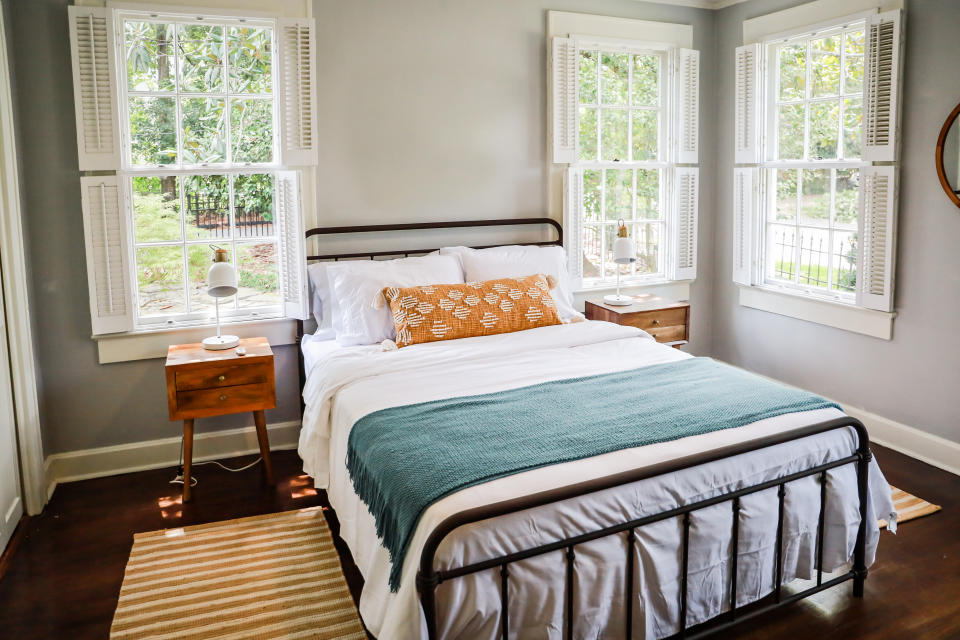

As the cost of living crisis continues to bite and mortgage payments rise, homeowners are looking for ways of generating extra income to cover increased expenses.
Renting out the spare room to a lodger is an increasingly popular solution, with recent research by The Mortgage Lender finding that 7% of those surveyed have already done so, 10% plan to in the future, and 16% are considering it.
Under the government’s Rent a Room Scheme, you can earn up to £625 a month tax free by letting a furnished room to a lodger. Here’s how to go about finding the right person.
1. Get permission
Begin by ascertaining whether a lodger’s allowed under the terms of your mortgage. If not, you won’t be able to proceed.
“Check with your lender to ensure this isn’t outside the conditions of your loan,” advises Liz Hunter, director at Money Expert.
Read more: Property: 7 ways to let more light into your home
“Also, check with your home insurance provider that your current policy covers lodgers. If it doesn’t you will need to take out a policy that does in order to protect everyone in your household.”
2. Prepare the room
You’ll need to provide a bedroom plus use of the kitchen and bathroom.
If you’re using the Rent a Room Scheme, the room must be in your main home and furnished with at least a bed, chest of drawers and a wardrobe, though lodgers would normally expect a bedside table, lamp and bin as well.
3. Place an ad
Research going rates for rooms in your area then place an ad online.
Try your local Facebook or Nextdoor group, and sites such as SpareRoom, Cohabitas (for landlords/lodgers aged 40+) or MondaytoFriday (if you’d prefer someone who’s around during the working week only).
Upload a description, photos and/or a video, details of whether utility and other bills are included and any specific requirements — for example cat lovers or non-smokers.
4. Vet the applicants
Draw up a shortlist of suitable applicants, and arrange to interview them — ideally in person, otherwise via video call. Asking the right questions is crucial to ensure compatibility.
Read more: Property: How to give your home a summer MOT
“Enquire about their background, job, and reasons for moving. Ask for references from previous landlords or employers. If anything seems off or strange, it’s best to move on with your search,” advises Joshua Findlater, managing director of Landlord Vision.
“You should also discuss daily routines and your expectations regarding visitors — this is a good opportunity to set some ground rules. Make sure you clarify the rent amount, payment method, and due date.”

5. Draw up an agreement
Although not required by law, a written contract detailing terms, conditions and responsibilities will help to iron out potential problems later on.
Specify the areas the lodger has exclusive use of, those that are shared, the rent, deposit, start date and duration, and an inventory.
“The typical deposit is usually a month’s rent, so your lodger would pay you a month up front, plus another month as a deposit. In England the deposit can’t be more than five weeks’ rent,” says Matt Hutchinson, director of communications at SpareRoom.
6. Establish notice periods
Include notice periods for both parties in the agreement.
“Generally, a notice period of at least four weeks is common. If a lodger doesn’t vacate the premises as agreed, the legal process to evict them requires obtaining a court order,” says Bernard Darko, lodging expert and co-founder of Kindroom.
Read more: How to protect your home from burglars while you’re away
“Familiarising yourself with the specifics of and the lawful procedure for eviction is crucial to navigate any potential challenges that may arise.”
7. Do a Right to Rent check
Since 2016, all landlords have been required to check that lodgers and tenants are legally allowed to live in the UK.
The Home Office has a comprehensive guide to checking documents for potential lodgers. Make a note of the date you do this and take copies of relevant documents or you could face a hefty fine.
8. Comply with safety requirements
All furniture in a lodger’s room must comply with fire safety regulations.
New items will be compliant, but check labels on older items, including the mattress, cushions, pillows and chairs if provided.
Read more: Property DIY: How to get rid of pests in the home
By law, gas boilers and other appliances have to be inspected annually by a qualified Gas Safe register Engineer, and a copy of the report given to the lodger.
9. Know the tax implications
The Rent a Room scheme lets you earn up to £7,500 a year by letting a furnished room, with no tax liability. Any income above this will taxable.
If rental income is shared with another co-owner the annual limit is £3,750 each.
“Expenses for providing the accommodation cannot be deducted. Additional services such as cleaning and meals are acceptable within the exemption, however any receipts which exceed the threshold would be classed as trading income, and so National Insurance charges would apply,” says Tim Walford-Fitzgerald, private client partner at HW Fisher. “Always file a tax return if you are earning rental income to avoid any nasty surprises in the long run.”
Watch: Am I wasting my money by renting?
Download the Yahoo Finance app, available for Apple and Android.






